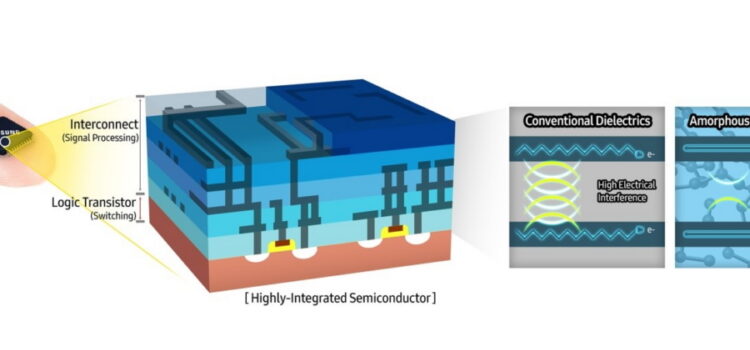Researchers produced a new material based on amorphous boron nitride consisting of a single layer of atoms that can revolutionize silicon semiconductor technology
The Samsung Advanced Institute of Technology (SAIT) has worked recently on the development of crystalline 2D materials with a single layer of atoms. The first target was graphene, a carbon-based material with excellent electronic and physical properties. One of the results is the development of a revolutionary transistor together with the design of new large-scale production methods. Previous experience has allowed SAIT to investigate other materials, such as boron nitride.
You might also be interested in —> Invented the world’s lightest electromagnetic shielding
The research, in collaboration between SAIT, the Ulsan National Institute of Science and Technology (UNIST) and the University of Cambridge, produced a material called amorphous boron nitride. The study was published in the journal Nature and represents a great opportunity to accelerate the development of the new generation of semiconductors. The material is made up of boron and nitrogen atoms arranged in space without a predetermined odrine, conceptually opposed to graphene. Amorphous boron nitride has the lowest dielectric constant among the materials in its class.
You might also be interested in —> New supercapacitor opens the door to wearable electronics
The material also has excellent mechanical and electrical properties and can be used as an interconnected insulator to minimize electronic interference in common semiconductors. Amorphous boron nitride is obtained as a wafer at low temperatures (below 400°C). These characteristics make it ideal for semiconductor applications such as DRAM (PC memory), NAND (flash memory) and large server memory. Seongjun Park, vice president and head of SAIT’s Inorganic Material Lab promises: “We will continue to develop new materials to lead the semiconductor paradigm shift”.

































